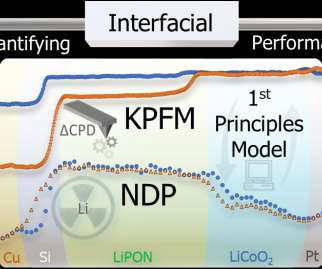Sandia testing method yields pathway to better, longer-lasting solid-state batteries
Green Car Congress
DECEMBER 6, 2021
Here, we combine two operando methods, Kelvin probe force microscopy (KPFM) and neutron depth profiling (NDP), to identify the rate-limiting interface in operating Si-LiPON-LiCoO 2 solid-state batteries by mapping the contact potential difference (CPD) and the corresponding Li distributions. —Alec Talin, co-corresponding author.


































Let's personalize your content